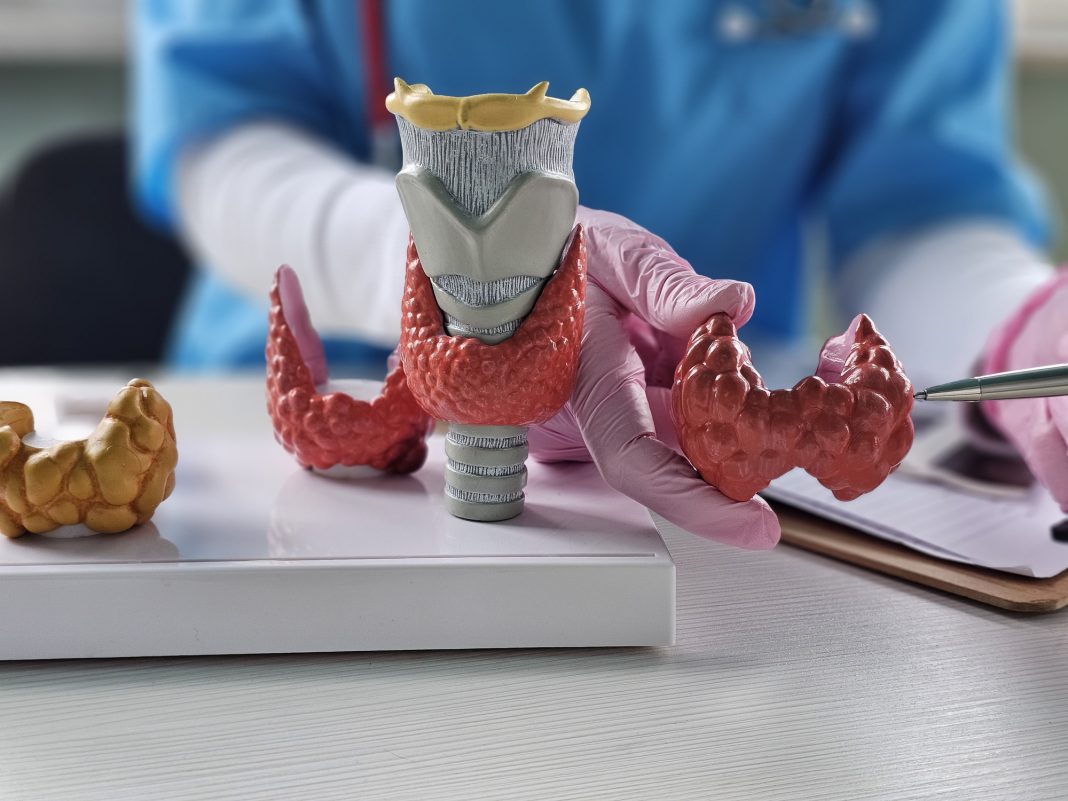Oliver Bathe, Professor of Surgery and Oncology at the University of Calgary and CEO of Qualisure Diagnostics, urges us to rethink papillary thyroid cancer, noting that “low risk” isn’t always synonymous with low impact
Papillary thyroid cancer (PTC) is the most common form of thyroid cancer and one of the fastest-growing cancer diagnoses in most developed countries. Because it typically grows slowly and has a high survival rate, it is often described as a “good cancer.” But this phrase conceals the real challenges patients and doctors face when deciding how to treat it.
Behind the reassuring statistics is a serious clinical dilemma: deciding how much treatment is enough. While most people with PTC will not experience a recurrence, about 10–15% will. Unfortunately, our current tools don’t allow doctors to reliably identify which patients are at the highest risk before surgery, leading to a cascade of problems for patients and the healthcare system.
The problem with the current approach
Today, treatment decisions for PTC are largely based on what physicians can observe through imaging and later confirm through microscopic examination. These assessments typically include tumor size, lymph node involvement, and certain cellular characteristics. This framework, developed decades ago, has two major shortcomings. First, it lacks accuracy. Many patients labeled as “low risk” still experience recurrence, while others receive aggressive treatment for cancers that would likely never return. Second, the necessary information often becomes available only after surgery, meaning that critical treatment choices are made without a complete understanding of the tumor’s behavior.
The result is overtreatment. Many patients undergo total thyroidectomy – removal of the entire thyroid gland – even when a smaller surgery or no surgery might have been appropriate. Some patients go through two surgeries because risk features are found only after the first. Many receive radioactive iodine treatment unnecessarily, exposing them to side effects and long-term health risks. These interventions come with physical, emotional, and financial burdens that could be avoided with better preoperative risk assessment.
Introducing Thyroid GuidePx®
Thyroid GuidePx® is a new molecular test designed to address exactly these issues. It offers a more accurate and timely way to understand how a patient’s thyroid cancer is likely to behave. Instead of relying solely on tumor size or appearance, the test examines the expression level of genes associated with recurrence risk.
The pattern of gene expression reflects the biological behavior of the cancer. The test analyzes RNA from a small sample of the tumor tissue, taken from a biopsy or during surgery. It uses a machine-learning model to classify the tumor into one of three molecular subtypes. Especially in tumors that are <4 cm in size, these subtypes have been shown in large, independent datasets to correspond to very different risks of recurrence:
- Type 1 tumors have an extremely low risk of recurrence
- Type 2 tumors have intermediate features but relatively favorable outcomes.
- Type 3 tumors are more aggressive and have a high likelihood of recurrence, even when the cancer appears small or early-stage on imaging.
This approach moves beyond estimating risk based on what the tumor looks like under a microscope. Instead, it reflects how the tumor is functioning at a molecular level, which is a much stronger predictor of future behavior.
How Thyroid GuidePx® changes the equation
By providing reliable recurrence risk information before surgery, Thyroid GuidePx® allows patients and doctors to make better-informed decisions from the outset.
- Choosing the right surgery. If the test shows a tumor is low risk, a patient and their surgeon might feel confident choosing a lobectomy (removal of half the thyroid) instead of a total thyroidectomy. This reduces surgical risk. In many instances, this also spares the patient lifelong thyroid hormone replacement. If the tumor is high risk, the doctor can recommend a more aggressive initial approach, avoiding the need for a second surgery later.
- Supporting conservative options like active surveillance or ablation. For very low-risk cancers, instead of surgery, patients might consider active surveillance (careful monitoring). A nonsurgical treatment, radiofrequency ablation, is also emerging as a treatment option. But these options only make sense if the cancer is truly unlikely to recur. Thyroid GuidePx® helps identify the patients most suitable for these approaches.
- Reducing unnecessary radioactive iodine (RAI) treatment. For patients who undergo total thyroidectomy, the test can help determine whether RAI is needed. This is especially valuable for those in the “intermediate-risk” category, where current guidelines are vague, and treatment decisions often vary.
- Improving patient confidence and experience. Many patients struggle with uncertainty after their diagnosis. Thyroid GuidePx® provides a clear, evidence-based risk estimate.
This clarity can reduce anxiety, facilitate shared decision-making, and help patients feel more confident in their care plan.
A timely advance for a growing challenge
Thyroid cancer rates are rising, especially among young adults. While survival rates remain high, the long-term burden of overtreatment is significant – including surgical complications, hormone dependence, repeated imaging, and financial hardship. Thyroid GuidePx® is a step toward precision oncology – treatment tailored to the biology of each individual’s cancer. By integrating this test into clinical practice, we can reduce overtreatment, minimize unnecessary interventions, and improve outcomes for patients.


